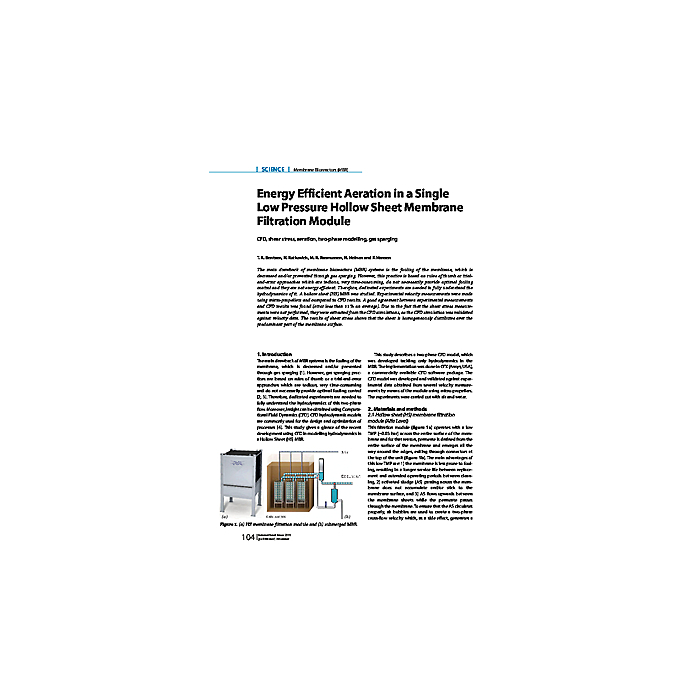Energy Efficient Aeration in a Single Low Pressure Hollow Sheet Membrane Filtration Module
4,90 €
Auf Lager
Artikelnummer
05399_2011_SP1_10
The main drawback of membrane bioreactors (MBR) systems is the fouling of the membrane, which is decreased and/or prevented through gas sparging. However, this practice is based on rules of thumb or trial-and-error approaches which are tedious, very time-consuming, do not necessarily provide optimal fouling control and they are not energy efficient. Therefore, dedicated experiments are needed to fully understand the hydrodynamics of it. A hollow sheet (HS) MBR was studied. Experimental velocity measurements were made using micro-propellers and compared to CFD results. A good agreement between experimental measurements and CFD results was found (error less than 11 % on average). Due to the fact that the shear stress measurements were not performed, they were extracted from the CFD simulations, as the CFD simulation was validated against velocity data. The results of shear stress shows that the shear is homogeneously distributes over the predominant part of the membrane surface.
| Autoren | T. R. Bentzen/N. Ratkovich, M. R. Rasmussen, N. Heinen and F. Hansen |
|---|---|
| Erscheinungsdatum | 30.06.2011 |
| Format | |
| Zeitschrift | gwf - Wasser|Abwasser - Special 1 2011 |
| Verlag | DIV Deutscher Industrieverlag GmbH |
| Sprache | English |
| Seitenzahl | 4 |
| Titel | Energy Efficient Aeration in a Single Low Pressure Hollow Sheet Membrane Filtration Module |
| Beschreibung | The main drawback of membrane bioreactors (MBR) systems is the fouling of the membrane, which is decreased and/or prevented through gas sparging. However, this practice is based on rules of thumb or trial-and-error approaches which are tedious, very time-consuming, do not necessarily provide optimal fouling control and they are not energy efficient. Therefore, dedicated experiments are needed to fully understand the hydrodynamics of it. A hollow sheet (HS) MBR was studied. Experimental velocity measurements were made using micro-propellers and compared to CFD results. A good agreement between experimental measurements and CFD results was found (error less than 11 % on average). Due to the fact that the shear stress measurements were not performed, they were extracted from the CFD simulations, as the CFD simulation was validated against velocity data. The results of shear stress shows that the shear is homogeneously distributes over the predominant part of the membrane surface. |
Eigene Bewertung schreiben


